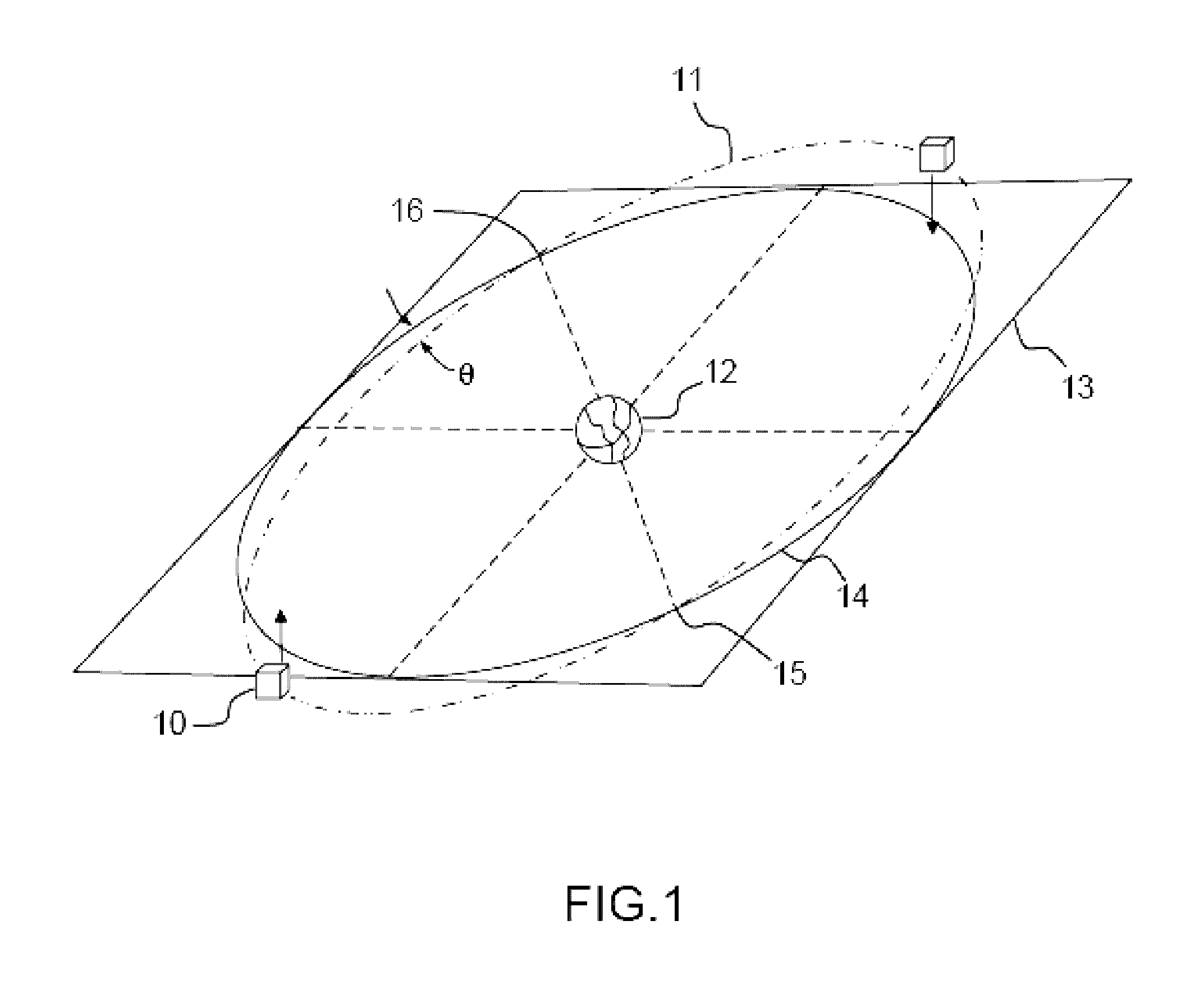Propulsion system for satellite orbit control and attitude control
a technology of satellite orbit control and attitude control, which is applied in the direction of cosmonautic vehicles, transportation and packaging, aircrafts, etc., can solve the problems of high initial mass, high cost and high mass of systems thus implemented, and disturbance of position and orientation
- Summary
- Abstract
- Description
- Claims
- Application Information
AI Technical Summary
Benefits of technology
Problems solved by technology
Method used
Image
Examples
first embodiment
[0095]FIG. 6 represents a satellite with geostationary orbit furnished with propulsion systems in a first embodiment according to the invention. A satellite 100 comprises a first propulsion system 500 fixed to the structure 20 of the satellite 100 by a north side with respect to the plane of the orbit 11, and a second propulsion system 501 fixed to the structure 20 of the satellite 100 by a south side with respect to the plane of the orbit 1. The firing of the propulsion systems 500 and 501 for several positions of the satellite 100 on the orbit 11 allows control of the six orbital parameters of the satellite 100. In the particular case of a geostationary satellite having a parallelepipedal structure, as represented in FIG. 6, the first propulsion system 500 can advantageously be fixed to the structure 20 on the north face 24 and in proximity to the anti-earth face 23, and the second propulsion system 501 can be fixed to the structure 20 on the south face 25 and in proximity to the ...
second embodiment
[0100]FIG. 7 represents a satellite with geostationary orbit furnished with propulsion systems in a second embodiment according to the invention. A satellite 101 comprises a first propulsion system 500 fixed to the structure 20 of the satellite 101 by a north or south side with respect to the plane of the orbit 11, and a second propulsion system 502 fixed to the structure 20 by one and the same side as the first propulsion system 500. The firing of the propulsion systems 500 and 502 for several positions of the satellite 101 on the orbit 11 allows control of the six orbital parameters of the satellite. In the particular case of a geostationary satellite having a parallelepipedal structure, as represented in FIG. 7, the first propulsion system 500 can be fixed to the structure 20 on the north face 24 and in proximity to the anti-earth face 23, and the second propulsion system 502 can be fixed to the structure 20 on the north face 24 and in proximity to the earth face 22.
[0101]The two...
PUM
 Login to View More
Login to View More Abstract
Description
Claims
Application Information
 Login to View More
Login to View More - R&D
- Intellectual Property
- Life Sciences
- Materials
- Tech Scout
- Unparalleled Data Quality
- Higher Quality Content
- 60% Fewer Hallucinations
Browse by: Latest US Patents, China's latest patents, Technical Efficacy Thesaurus, Application Domain, Technology Topic, Popular Technical Reports.
© 2025 PatSnap. All rights reserved.Legal|Privacy policy|Modern Slavery Act Transparency Statement|Sitemap|About US| Contact US: help@patsnap.com



